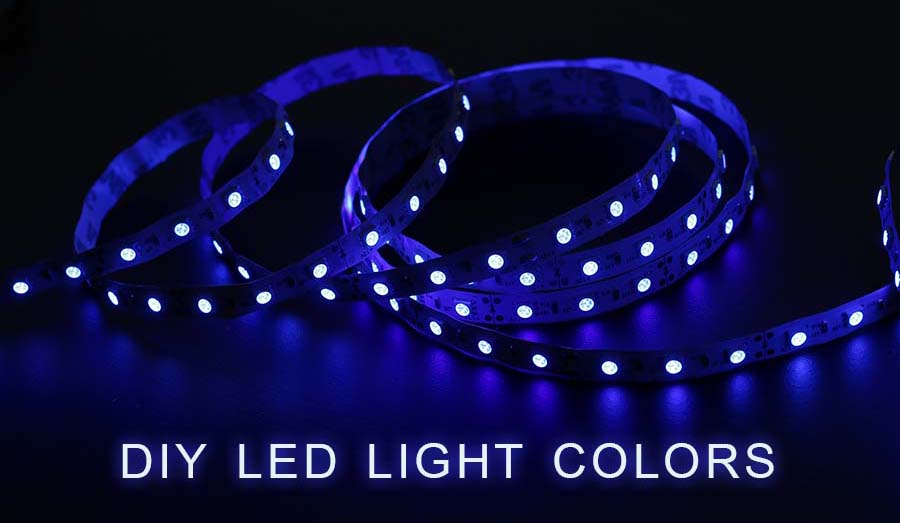To function on a constant basis, DIY LED Light colors is a technologically sophisticated form of creating light that uses significantly less energy, lowering your electricity expenses.
It’s not just that, but LEDs come with a slew of additional capabilities that aren’t available with regular bulbs. Electricity is transferred through a microchip, which then ignites these small light sources (the LEDs).
Following that, the LEDs enable to provide enough power to illuminate the bulb while also regulating temperature fluctuations that may occur as a consequence of the cycle.
A heat sink is also included. Long-term efficiency concerns are avoided as a result of this.
Therefore, despite the fact that they are constructed to survive, a lot could very well go badly.
DIY LED Light Colors Problems That Have Been Reported
The oddest of all the events that may go wrong would be when the LEDs start to light up in the incorrect hue.
We’ve observed that a lot of users have been posting on message boards and forums recently to share their uncertainty regarding this issue.
But don’t worry, the issue isn’t as serious as it appears. It’s also not that difficult to fix once you figure out how.
To that end, we’ve compiled this handy guide to assist you in resuming regularity.
How To Adjust DIY LED Light Colors That Are The Incorrect Color
One thing that attracts attention to LED lighting over traditional lighting is the ability to pick from a wide variety of colors to illuminate your areas as you see fit.
This enables mood lighting or the use of a variety of hues in the same place. If you truly want it, it may feel like Xmas time all year round!
Nevertheless, like with every piece of technology, the more features there are, the more likely something will go haywire at some point.
As a result, several users have complained that this particular functionality is the one that is causing the system to stop. The most prevalent complaint is that the wrong colors are flashed at an inappropriate time.
However, there are a plethora of possible causes for this problem. As a consequence, it isn’t easy to pinpoint a single reason.
But, whatever the problem, we can try a variety of solutions to restore things back to normal.
So, if you want to repair it, follow these easy steps:
Verify That All Of The Connections Are Secure.
The most typical source of this problem is improperly plugged-in LED lights. Fortunately, this is a rather simple issue to resolve.
- To proceed, ensure sure the black wire on the RGB strip connection is connected to the +12V on the very same end as the +12V.
- Secondly, double-check that the connector’s + end is aligned with the strip’s positive end.
- While you’re at it, double-check that your R, G, and B wires are all attached properly.
- It may be a hassle whenever this occurs, and users have complained that the wires have been incorrectly labeled occasionally.
However, the only solution you could do in this situation is to fiddle with the cords until you discover the perfect configuration that restores functionality.
DIY LED Light Colors Must Be Reset
The preceding procedure should have worked; however, if it didn’t, move on to a different task on the to-do checklist.
Though this solution appears to be far too basic to be effective, you’d be astonished at how effective an uncomplicated reset may be.
In addition, this remedy is so common and effective on so many gadgets, and all you have to do now is reset the LEDs and the controller to correct the problem. This restores the factory default settings.
Adjustments to the settings over time might result in your lights malfunctioning.
The simplest approach to undo such modifications and remove any faults that may have snuck in overtime is to reset the computer.
Though we’d love to walk you through the steps to reset your lights, there are too many different products and variants out there, each of which has its unique set of settings.
- There appears to be a specific reset button in almost every case.
- If not, you may usually do it by pressing and holding the power button for a few seconds.
- If neither of these methods works, it’s a smart option to search up the product’s information online to save any additional speculation.
Replace The DIY LED Light Colors Strip And The Controller.
If the two remedies above don’t operate, your LED strip and controller are likely broken.
Nevertheless, there really is no cost-effective method to avoid this, so your only alternative is to replace one or both of these parts.
Try controlling your LED strip with a different controller to limit the problem.
You’ll have had to replace your LED strip if this doesn’t perform.
The Final Word: DIY LED Light Colors Are The Wrong Color.
LED light strips are a terrific and reasonably affordable way to add a little more touch of elegance to any living space, but they aren’t without flaws.
Therefore, if you’ve tried everything and still haven’t gotten anywhere, the single most important thing to do is change all.
That said, we are well aware that now you’ll have devised fresh and highly inventive solutions to the situation.
